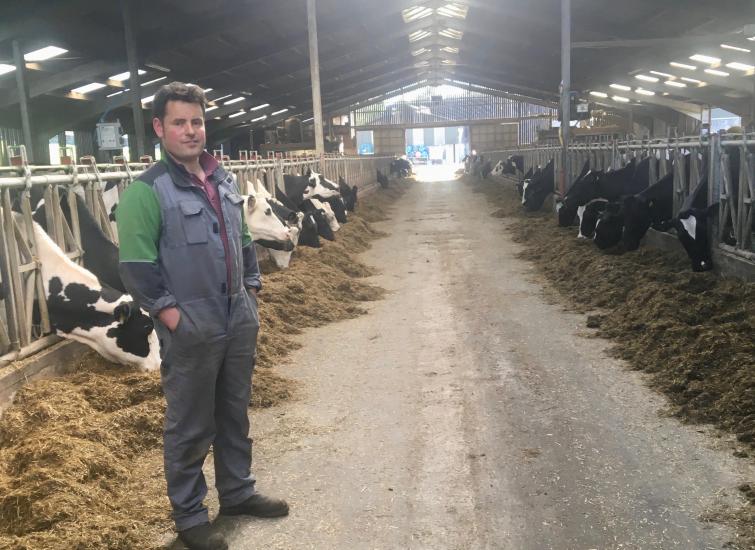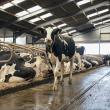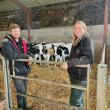Utilising forage to improve animal health and milk yields
Richard Bainbridge from Advanced Nutrition working with Martyn Jennings at his farm in North Yorkshire to utilise homegrown forage to improve milk yields and animal health on an AMS Farm in North Yorkshire.

Martyn Jennings milks a herd of 250 Holsteins at Lower Lane Ends Farm in North Yorkshire. Just over six years ago, Martyn changed from a conventional to a robotic system and currently operates 5 robots.
When Richard Bainbridge, Ruminant Specialist at Advanced Nutrition began working with Martyn Jennings in July 2019, he was tasked with increasing production, to get more milk from forage. Also, because Martyn is a very good forage maker and always has plenty left - the aim was to reduce feed costs. Nine months later and targets have certainly been met with a lift in milk yield from 30litres to 35/36 litre average per cow per day.
In July, Martyn was feeding a good cake in the robot and silage down the trough with a bespoke blend. Martyn comments, “At that time, we just weren’t getting the results we wanted, particularly in terms of milk production.”
Having had problems with the dry cows in the past, they focused on that group first. Martyn comments, “I like to keep things simple. We had produced a good first cut silage with plenty of fibrous material for the dry cows which we layered in the middle of the clamp. A lot of nitrogen had come out, perfect for the dry cows.”
The dry cow diet was designed to get a high level of fibre into the cows whilst keeping the energy density low, so they are not adding condition to the cows. They aim to keep the rumen as full as possible to prevent any post calving issues and allow the cow to eat as much TMR as possible. Richard formulated a diet where they fed the far-off dry cows a silage, big bale and mineral combination. Three weeks before calving the cows are taken into the close-up pen and are fed an additional 26% protein dry cow nut.
Martyn comments, “This diet has really helped us. Calving has been easy, we are not getting any milk fevers and the cows are just firing right into the first lactation - we are getting up to 40 litres in this period.”
Having got the dry cow diets spot on, the team looked to make improvements in the milking cows. Martyn explains, “The first and second cut silage was good quality but not rocket fuel. We were also using a bespoke blend that was expensive and we just weren’t getting enough milk from it.”
Richard discussed the diets with Martyn, they needed to look at what would work with the forage, as well as looking at costs. They had plenty of good forage and the aim was to utilise this at its best and limit the amount of concentration fed. There wasn’t a lot of wheat around pre-Christmas 2019, they changed to Soda Wheat with high protein blend to balance the diet.
Martyn comments, “We saw an instant lift in milk and a reduction in input costs.”
Martyn got to Christmas and wanted to try and increase the milk yields further. Richard then included sugar beet nuts into the diet and dropped the straw levels out of the TMR.
“The cows were cudding a lot better than previously, we were brave and pulled all the straw out of the diet so they were eating more silage. At the end of January we put 2Kg of Trafford Gold into the mix, increasing the protein in the base diet, and again saw another lift in milk and cudding was even better again!”
Martyn continues, “Overall, with the change in diet and the utilisation of the available forage, we have hit the sweet spot with the cows. In the last 15 months the diet has just come together. We’re not feeding the cows hard in the robots as is usual practice, about 9Kg in the robot and 6.7Kg across the herd. However, the balance is just right and we got up to 35.5 litre average, with the top cows peaking at over 70 litres. Not only that, we serve using a sexed semen but as we’ve got the cows to optimal health, they are consistently getting back in calf with improved fertility rates.”
As we move into the Spring of 2020 and a new cutting season, the future will see forages continually changing. Richard’s focus will stay the same - to utilise these forages and balance the diet accordingly with the focus on keeping the cows at optimal health. That way, milk yield and quality, fertility rates etc. will continue to improve.
〈 BACK














